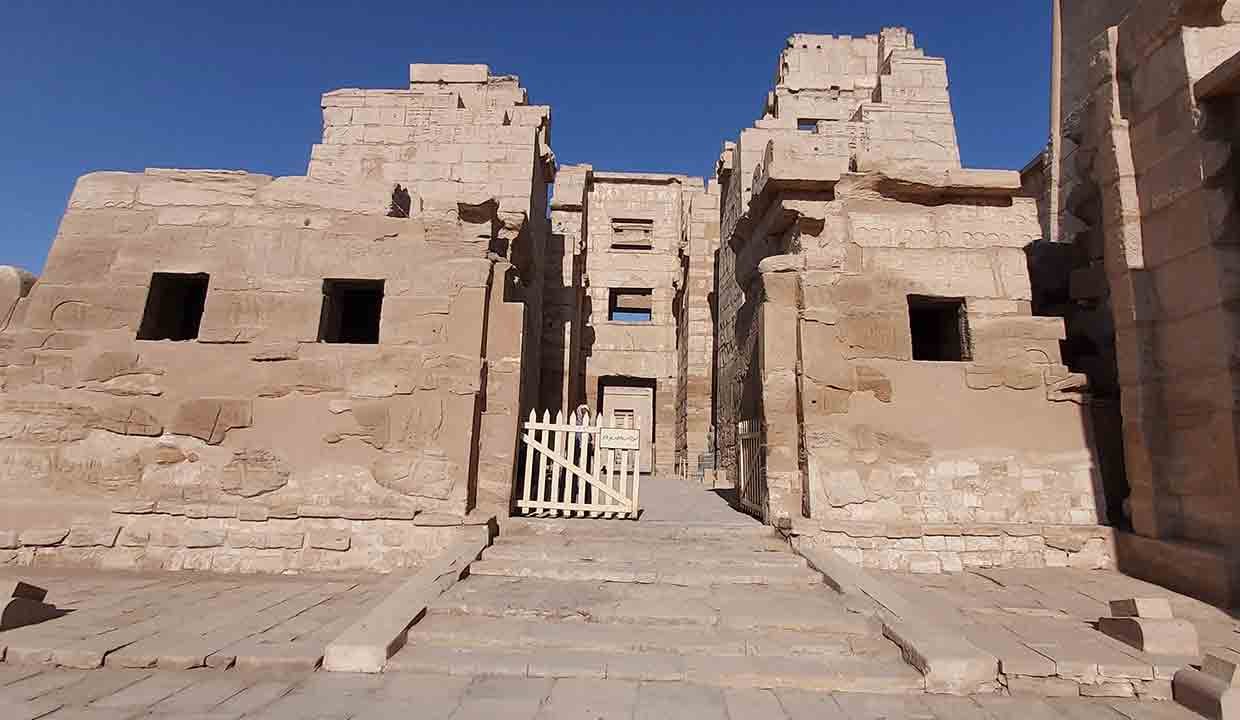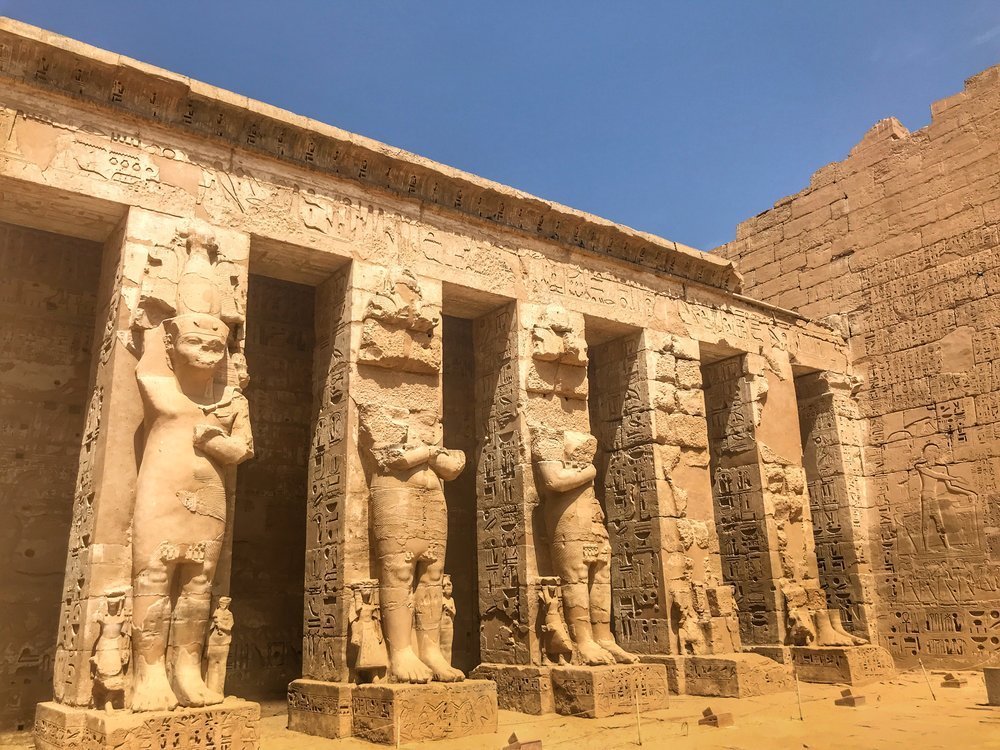The Magnificent Medinet Habu: The 3 most famous statues.
Ancient Splendor Revisited: Medinet Habu’s Timeless Tales
Ramses III’s magnificent memorial temple of Medinat Habu, fronted by sleepy Kom Lolah village and backed by the Theban mountains, is one of the west bank’s most underappreciated attractions. This was one of the first locations in Thebes that was associated with the local god Amun. At its peak, Medinat Habu housed temples, storage rooms, workshops, administrative buildings, a royal palace, and priests and officials quarters. For centuries, it served as the center of Thebes’ economic life.
Medinet Habu, located on the West Bank of Luxor in Egypt, stands as a testament to the grandeur and intricacy of ancient Egyptian architecture and religious practices. This sprawling temple complex, which is second in size only to the famed Karnak Temple, provides an in-depth look into the rituals, wars, and daily life during the New Kingdom era, particularly the time of Ramesses III.
Historical Overview
Medinet Habu is primarily known as the Mortuary Temple of Ramesses III, one of the great pharaohs of the 20th Dynasty. Construction began during the early years of his reign, around the 12th century BCE. However, the site had been considered sacred long before Ramesses III decided to build his funerary temple here. Earlier structures and chapels from the Middle Kingdom period have also been found.
Architectural Marvels of Medinet Habu
- Main Temple of Ramesses III: Dominating the complex, this temple is a grand representation of New Kingdom royal mortuary architecture. It comprises pylons, courtyards, a hypostyle hall, sanctuaries, and smaller chapels. The walls are adorned with intricate reliefs depicting rituals, battles, and the pharaoh’s daily life.
- The Migdol Gate: Resembling the front of a Syrian fortress (migdol means “fortress” in Semitic languages), this imposing gateway serves as the entrance to the temple complex. The gate is adorned with scenes of Ramesses III’s military victories, emphasizing his prowess and power.
- Chapels and Smaller Temples: Surrounding the main temple are smaller shrines and chapels dedicated to deities like Amun, Ptah, and Sekhmet.
Artistic Depictions and Reliefs
The walls of Medinet Habu are a treasure trove of historical and religious data. Here are some highlights:
- Military Campaigns: Ramesses III’s naval battle against the Sea Peoples is depicted in great detail. This representation provides valuable insight into the weapons, ships, and tactics used during this critical period of ancient Mediterranean warfare.
- Religious Festivals: The temple walls chronicle various festivals, most notably the Beautiful Feast of the Valley, connecting the mortuary practices at Medinet Habu with the nearby Valley of the Kings.
- Rituals and Offerings: Scenes portraying the pharaoh making offerings to the gods are prevalent. These rituals ensured the smooth transition of the pharaoh to the afterlife and maintained Ma’at, or cosmic order.
Preservation and Restoration
While many ancient Egyptian monuments have faced decay, Medinet Habu remains remarkably well-preserved. Its remote location and the construction of a thick mudbrick wall around the temple for protection against invasions played a role in preserving this gem. Over the years, archaeological missions have undertaken restoration efforts to ensure its endurance for generations to come.
Modern Significance and Tourism
Today, Medinet Habu is a UNESCO World Heritage site, drawing thousands of visitors annually. While it may not be as renowned as the nearby Valley of the Kings or the Temple of Hatshepsut, its detailed reliefs and massive scale make it a must-visit for history buffs, archaeologists, and anyone intrigued by ancient Egypt‘s enduring legacy.
In Conclusion
Medinet Habu, with its intricate carvings and imposing architecture, serves as a silent witness to the religious fervor, military might, and daily life during Ramesses III’s reign. As the sands of time shift, this monumental edifice continues to enchant visitors, narrating tales of a civilization that, in its grandeur, built structures not just for their time, but for eternity.
Explore Egypt Tours Tripadvisor



Comment (0)